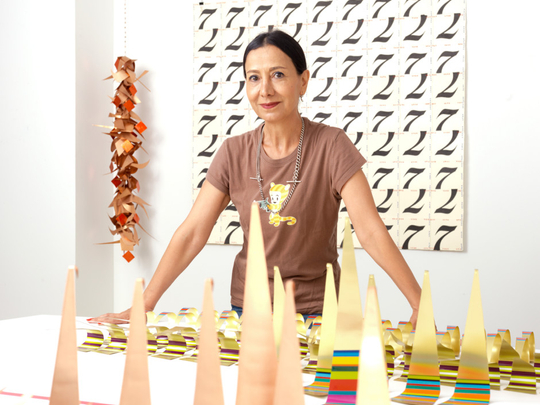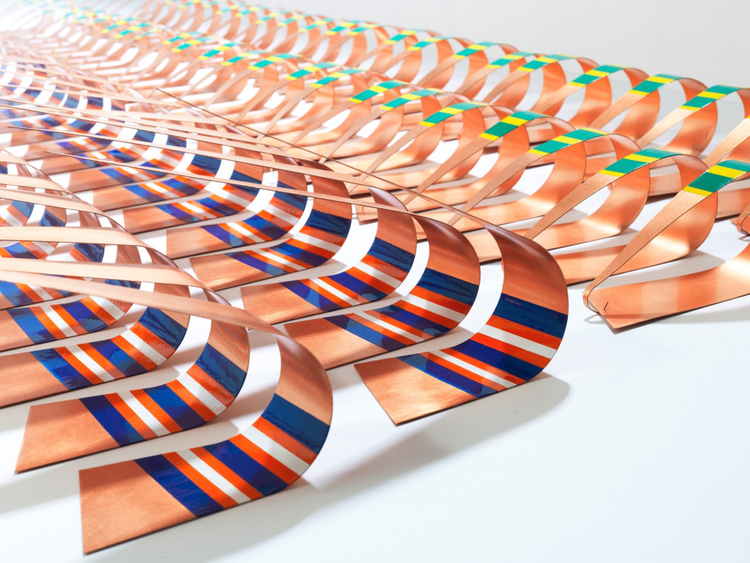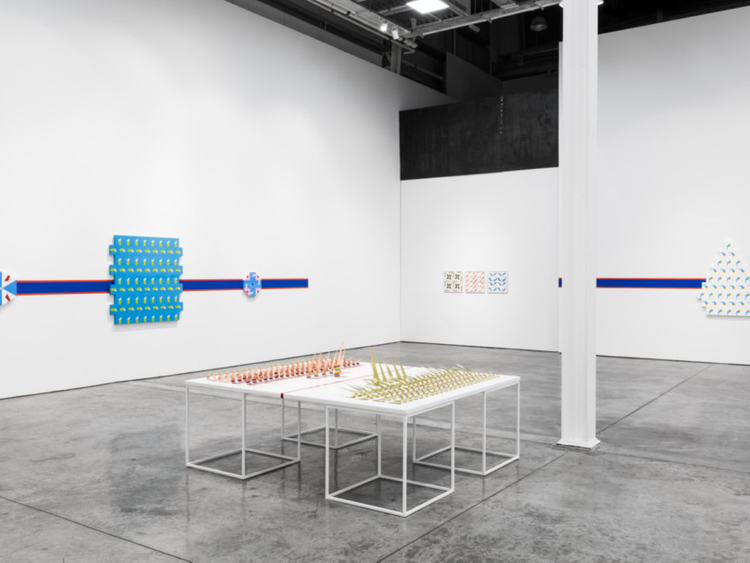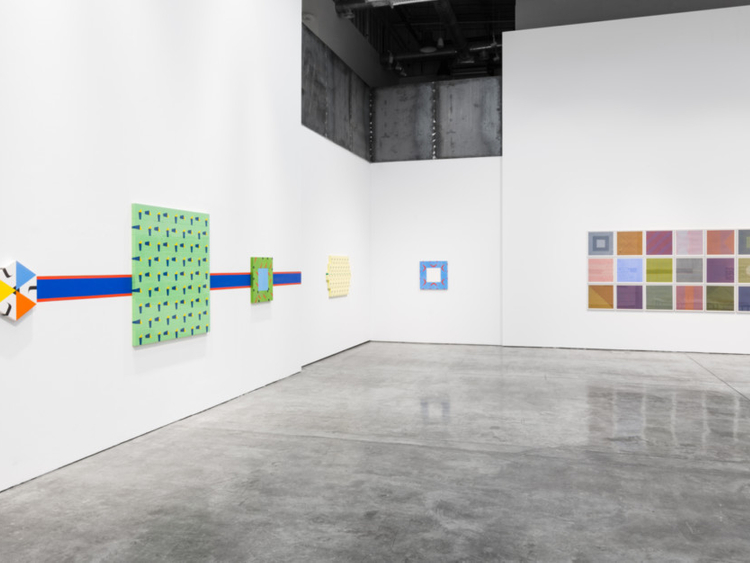
It is difficult to imagine that the beautiful drawings and paintings in Pouran Jinchi’s latest exhibition, The Line of March are connected to war and conflict. But these benign artworks in soft pinks and bright blues and greens, actually reflect the myriad ways in which militarism has discreetly seeped into popular culture and is entrenched in our daily lives.
The title of the show has been borrowed from a work by 18th century French artist Jean-Atoine Watteau, whose paintings depict the lives of ordinary soldiers in times of war. While it refers to the militaristic theme of the show, it also alludes to the New York-based Iranian artist’s lifelong exploration of the lines and forms of calligraphic letters.
“Military language and aesthetic permeates every aspect of our culture, from films, television and video games to our usage of terms such as war of words, deploy, regimented, and occupied in our daily conversations. My work is always about language and communication, so it was interesting for me to work with the coded language of military infrastructure and jargon,” Jinchi says.
The artist spent two years researching the subject. She studied various aspects of the visual apparatus of military power such as the insignia and medals, camouflage and war paint, as well as military jargon, and the cryptic language of naval flags, the Morse code and phonetic alphabet. Her palette, as well as the materials and techniques she has used to create this body of work, such as enamel, brass, copper, graphite paper and embroidery, are all inspired by the visual aesthetic of militarism.
Another thing that caught her attention during her research was the rubble of war that has been preserved in many cities. For example, she found photographs of a building in the German city of Koblenz, where a pile of broken tiles left behind by the destruction of WWII has been integrated into the modern architecture.
Jinchi has brought all these elements together in a series of works composed of MDF panels, covered with enamel paint. On these panels, she has painted fragmented and abstracted Persian letters that correspond to the military’s phonetic alphabet, indicated by the titles, such as A as Alpha, V as Victor and Z as Zulu.
The bright colours in this series reflect the stripes of military ribbons, which constitute a coded language describing the ranking and achievements of military personnel. The enamel tiles are arranged together in shapes that are inspired by military insignia and medals, or reference architectural fragments that remain as reminders of historic wars in old cities.
In another set of works, Jinchi has used graphite markings on colorfix paper to create a series of drawings based on the phonetic code and the colours and geometric shapes of the signal flags used by naval ships for communicating various messages.
A striking work that captures the power games behind the turmoil and human suffering happening around the world today, and throughout history is The Red Line. It is inspired by a black and white photograph from the 1920s that Jinchi found during her research. The picture shows Soviet chess masters playing the game on a massive chessboard at the Palace Square in Leningrad using real life soldiers from the Red Army as the black pieces, and sailors from the navy as the white pieces, with thousands of people watching their moves intently.
Jinchi’s interpretation of the image is a set of brass and copper sculptures arranged like chess pieces on a white table, on either side of a big, bold red line. Each gleaming, pointed, spear-like sculpture is a stylised version of the Persian letter A (for Alpha in phonetic code), and is painted with stripes representing different military ranks. The king, his generals and other top-brass stand upright in the front rows, while the pieces in the back rows have been bent by hand to various degrees to depict lower ranking officers and ordinary soldiers.
The embroidery on military uniforms and insignia inspired Jinchi to use embroidery in her work for the first time. In a series of works on linen, she has hand embroidered various letters using the precise combinations of dots and dashes in the Morse code, blending them with her calligraphic interpretation of the letters to create her own version of military badges.
A key piece in this show is a work on khaki linen, where Jinchi has embroidered a quotation from the ancient Chinese military treatise, The Art of War, written by military strategist Sun Tzu. The quote, which the artist has translated into Morse code says, “The greatest victory is that which requires no battle.” The profound words, camouflaged by the Morse code, are a reminder of how militarism has covertly invaded civil society.
“I made a conscious effort to make my artworks look nice, friendly and approachable because I wanted to echo how militarism seeps into our society subversively. I always try to make my works visually appealing, because the sense of beauty gives us hope, and we need to have that in our lives at a time when everybody is so anxious and fearful about the future,” Jinchi says.
Jyoti Kalsi is an arts-enthusiast based in Dubai.
The Line of March will run at The Third Line, in Alserkal Avenue, Al Quoz until October 21.

















